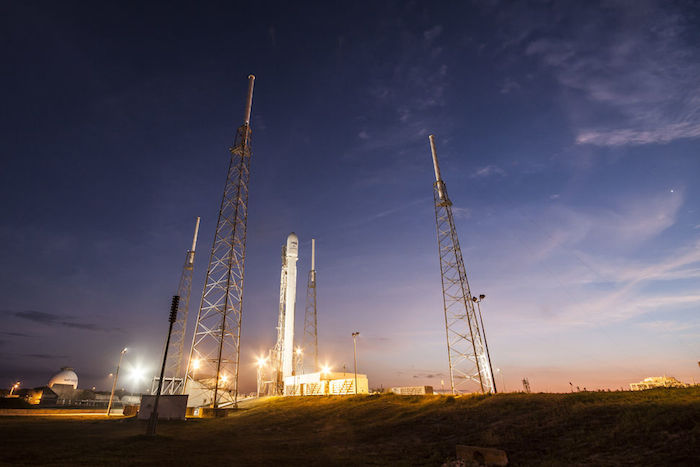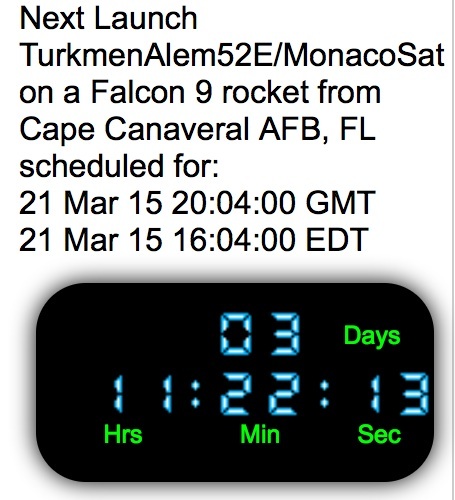.

Mar 21 - Falcon 9 : TurkmenAlem52E/MonacoSat Launch site Cape Canaveral AFB, FL
Launch Date Mar 21
From Launch Pad SLC-40
Launch Window : 4:04pm to 5:04pm EDT (20:04 to 21:04 GMT)
.

Quelle: AS
.
Helium issue delays SpaceX launch set for Saturday
Problems with a helium tank used for pressurization dissuaded SpaceX engineers from proceeding toward a Saturday launch of a Turkmenistan communications satellite. The new launch date has yet to be set and is likely at least a week later.
The Falcon 9 rocket that was to carry the satellite was scheduled to have a so-called static fire test — a final dress-rehearsal countdown culmination in a brief firing of the first stage's nine engines while the rocket remains held down on the Cape Canaveral Air Force Station pad in Florida — on Tuesday. But the helium tank issue brought the test to a halt, and SpaceX officials decided to call off Saturday's launch so they could have more time to examine the problem.
SpaceX president Gwynne Shotwell announced the delay Tuesday while addressing the Satellite 2015 conference in Washington. According to SpaceNews' Peter B. de Selding, Shotwell also told conference attendees that SpaceX is preparing an enhanced Falcon 9 with around 15 to 20 percent greater capacity based on ramping the Merlin 1D engines up to their full rated ability.
Such an improvement would allow SpaceX to recover its first stage even on fuel-intensive launches such as geostationary satellites. In the Falcon 9's current configuration, the fuel needs for such missions — including the previous launch of a pair of communications satellites, and the upcoming communications satellite launch — have precluded attempts to land the first stage on SpaceX's offshore drone ship.
The two attempts SpaceX has made have resulted in partial successes, with a stage in January on target and only crashing at the last moment after steering "grid" fins ran out of hydraulic fluid (capacity has since been increased) and a stage a month later splashing down within 10 meters of where the ship would have been, had high seas not forced the drone ship to abandon its station.
Quelle: WacoTribune
3774 Views
